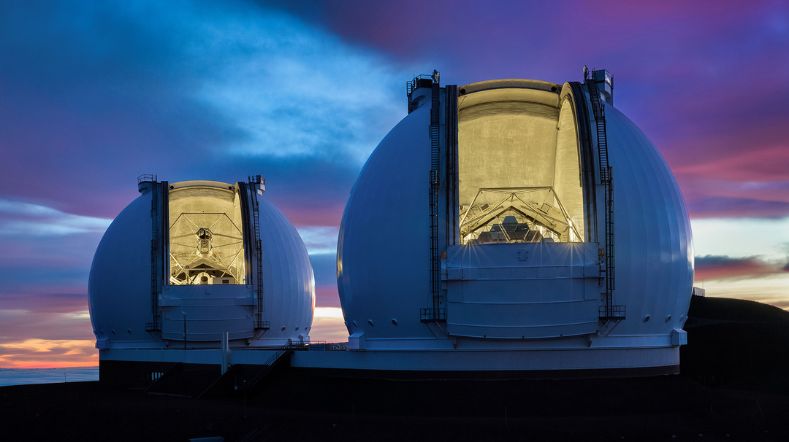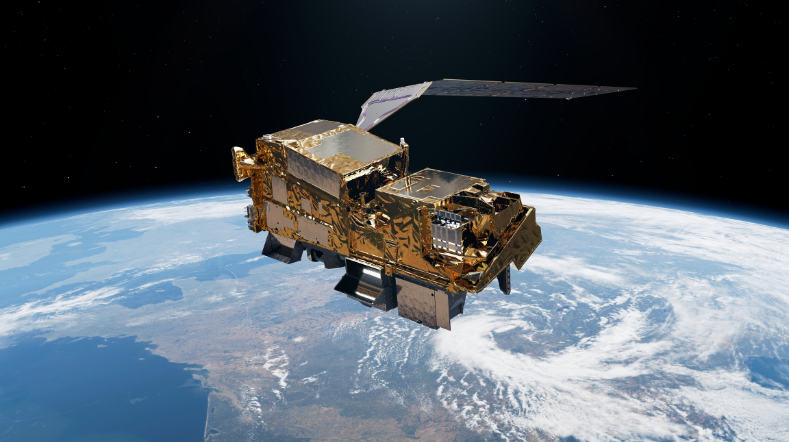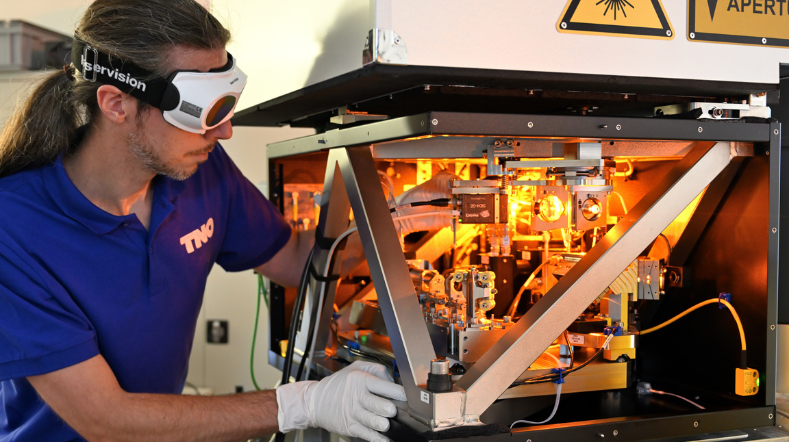Laser satellite communication
There is a growing demand for more data, due to, among other things, the advent of self-driving cars, social media with more videos, and the ‘Internet of Things’. The existing connections cannot meet that demand. Laser satellite communication offers a solution.
What is laser satellite communication?
Laser satellite communication is optical communication that uses satellites. Satellites send information to Earth via laser signals, or invisible light signals. This makes data transmission much faster than using the radio frequencies that we currently use for communication all over the world.
Optical satellite communication via a satellite network
The laser signals connect satellites with each other directly using so-called inter-satellite links. But they also connect satellites and receiving stations on Earth. A receiving station can also be built into an aeroplane, providing internet during the flight. Laser satellite communication works best if you build a network of multiple satellites. These exchange data among themselves and then send it back to Earth.
Creating an effective laser communication network requires dozens or even hundreds of satellites. Together, they can reach the entire surface of the earth. There are a number of companies and institutions building these networks. SpaceX is doing it with StarLink, the European Space Agency ESA is building EDRS. These networks consist of satellites that are becoming ever smaller and cheaper.
The advantages of satellite communication
Laser satellite communication allows you to send much more data. Its power consumption is much lower, and, at the same time, its efficiency is higher. Moreover, it can be as much as 10 times faster than normal communication. Using laser satellite communication, you can process a terabit of information per second. That's about 125 gigabytes. Its speed is the equivalent of simultaneously streaming 200,000 Netflix films in HD quality. Laser satellite communication is also much safer than radio communication because it's much harder to eavesdrop. That's why this form of communication is also very interesting for the Ministry of Defence.
More data processing needed
Laser satellite communication offers advantages, but it is also necessary. For example, the advance of the self-driving car is unstoppable. These autonomous vehicles process gigabytes of data every second. And it's not just cars that are getting smarter and, therefore, need more data. Our homes can also do more and more. Thermostats, refrigerators, and smoke detectors – an increasing number require an internet connection and process more and more data.
To process all that data, the current radio frequency spectrum is no longer enough. It’s too limited in terms of data processing. And a lot of people are already using it, creating scarcity and disruptions.
Our work
We work with more than 30 researchers to develop satellite communication. We focus on the optical part, collaborate with various parties, and do research on RF technology.
The optical part
We don't build the whole satellite, but only the optical part through which the satellites communicate with ground stations and optical terminals for inter-satellite communication. We are also developing the key technologies needed for the future, more advanced terminals. Some examples are high-precision mechanisms, optical components, the production of mirrors, and components for photonics. An important task for us is to make the components smaller, cheaper, and, therefore, more commercially interesting.
Collaboration
We frequently work with the Dutch and European space and high-tech industries. Our country has many companies that are already building microchips or other components relevant to laser satellite communication. We help these companies to deploy their work processes and machines. This benefits both parties.
RF Technology
We are committed to researching radio frequency (RF) technology for satellite communication. Our focus is on phased array antenna systems and the building blocks used to construct them. Whether you need an innovative step in MMIC design with GaN technology, an analogue multipaction-free front-end design, wide steering phased antenna design or RF lens antennas, you can trust us to translate the most advanced research results into new satellite communication technology.
Get inspired
TNO to design adaptive secondary mirror for Keck Observatory


Sentinel-5: ultra-precise satellite data for a healthier future


Optics


Time setter story: Max van Strien


TNO technology selected for Secondary Mirror of W. M. Keck Observatory


